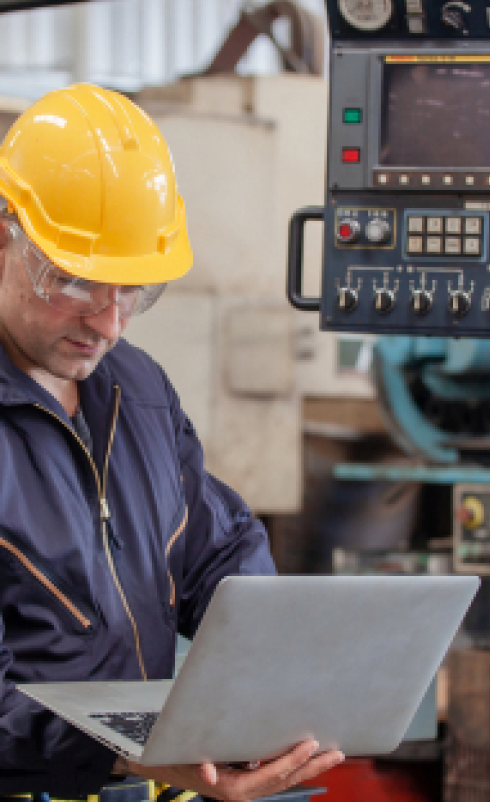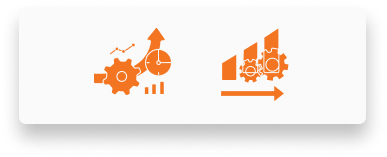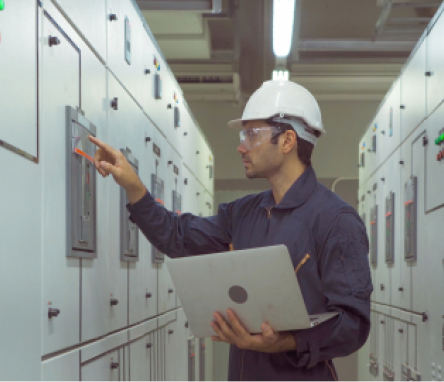Plug-and-Play Sensor
Plug and Play sensors are state-of-the-art IoT hardware that addresses the efforts required for connectivity and set-up, by providing the benefits of seamless set-up and efficient performance.
History
The earliest use of the term Plug and Play finds its roots decades before the advent of modern technology, in reference to plugging an instrument / tool into an electrical system. Over the years, the term has evolved to accommodate modern wireless devices with the capacity to install and connect in a matter of minutes.
The installation of sensors has, traditionally, been a long and expensive process, particularly in hazardous locations, but newer sensor models are changing those requirements.
The earliest versions of sensors that enabled the monitoring of output parameters of the machines came with various problems such as complex wired architecture and the need for constant monitoring by a network host to ensure that all sensors are connected to the network.
The network host had to keep track of detailed information such as the number of connected sensors at all times. Moreover, identifying the ones that fell out/got disconnected from the network due to technical issues, and rearranging the networking capability every time new sensors were added to the network, to ensure synchronization with the network configuration, added to the challenge of maintaining a robust network.
These also posed significant limitations to scalability. In addition, it brought problems of setting-up the networking applications and network configuration management.

Plug and Play Sensors
Plug and Play Sensors are easy to install and can collect data automatically, which is then transmitted to the cloud for analysis and subsequent visualization of machine health and performance. They receive equipment data on a routine basis, which would be impractical with route-based inspection / data collection, thereby offering significantly increased visibility of machine health status. These sensors monitor trends in an automated fashion, and alerts the plant personnel about any abnormalities.
They support multiple communication protocols such as Wi-Fi, Bluetooth or Cellular Networks, which enable machine-to-machine communication, thus eliminating the manual process of checking each sensor for data. Manufacturing operations across sectors are driving their digital transformation with the new Plug and Play Vibration sensors that help bring real-time insights about the machine performance factors to the fingertips of the maintenance & reliability professionals, thus allowing them to focus on maintenance activities rather than determining the need for maintenance.
The state-of-the-art Plug and Play Vibration sensors can be installed on the equipment sets to monitor their vibration levels, and obtain real-time insights about the performance and health of these equipment sets, thereby helping to identify faults before it leads to catastrophic failures. This enables the maintenance teams to take appropriate corrective action to prevent unplanned downtime and keep up the production levels.



Advantages
These sensors are truly wireless, which helps to avoid the hassles of complex wiring even in remote places where frequent manual inspections pose significant challenges. Hundreds of these sensors can be installed in a matter of days, enabling complete automation of data collection at a plant within a week; this ensures faster scaling as well as ROI.
There are many examples of wired sensing requiring months to install and commission. Wireless sensors can be custom-configured to meet the specific requirement of a particular plant and can capture data seamlessly. The upgrades to the sensor firmware can be pushed through OTA (Over The Air) functionality, eliminating the need for manual maintenance of the hardware.


One of the notable advantages of Plug & play sensors is that they offer the opportunity to scale the adoption of Industrial IoT at a faster pace, going from small-scale pilots to global rollouts in a very short span of time. This facilitates real-time monitoring of the health of critical assets, to enable better operational oversight of the manufacturing operations.
The use of these Plug and Play Vibration sensors to foresee the failure of assets in advance will empower the stakeholders from both the Top Floor and Shop Floor to make accurate decisions that have the potential to transform the entire manufacturing sector.
Nanoprecise Sci Corp
Nanoprecise is a Predictive Maintenance Solution provider that facilitates early detection of even small changes in machine operations well before they impact production or cause downtime.
The automated Predictive Maintenance System consists of a unique six-in-one IIoT sensor, and patented algorithms that analyze data in real-time.
The Plug & Play functionality of the solution ensures a shorter installation process, allowing users to devote their time towards crucial maintenance activities that maximize the uptime of industrial assets.

Plug and Play Sensor from Nanoprecise Sci Corp
Machine-DoctorTM is a unique 6-in-1 IIoT Plug and Play sensor from Nanoprecise that offers the opportunity to monitor every aspect of the manufacturing operation, leading to greater productivity and reduced downtime. It helps improve the safety of the operators and operations, by sending real-time data and predicting issues arising from equipment anomalies/faults. In the complicated manufacturing operation, these wireless Plug and Play sensors can successfully achieve internet connectivity and provide continuous monitoring of the health of critical assets, not only to reduce unplanned downtime but also to increase the productivity of these machines.
Request a Call Back
Frequently Asked Questions

Let us show you how!
Explore the transformative potential of predictive maintenance. At Nanoprecise, we specialize in tailoring predictive maintenance to your unique needs. Reach out today, and together, let’s pave the way for a more efficient, profitable and sustainable future.